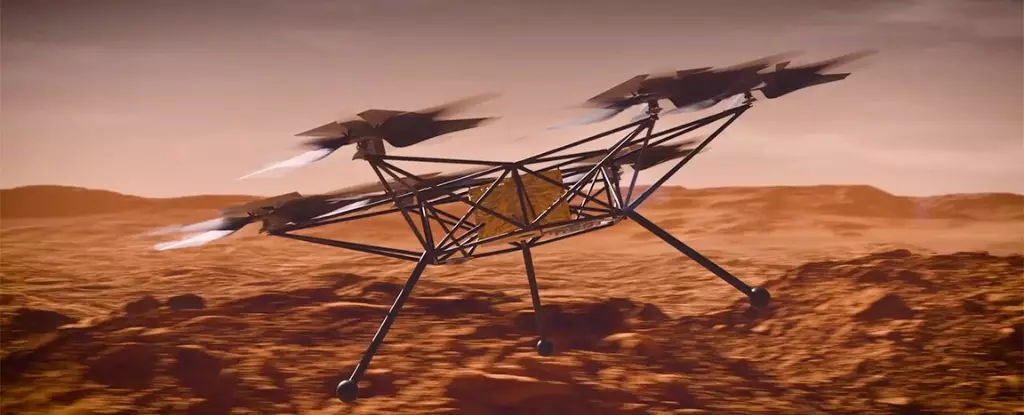In April 2021, humanity witnessed a groundbreaking achievement when Ingenuity became the first powered aircraft to achieve flight on another planet. This small helicopter, designed for the inhospitable Martian environment, opened the door to unimaginable possibilities in extraterrestrial exploration. As Ingenuity continues to soar through the thin Martian atmosphere, NASA is now unveiling its next project: the Mars Chopper, designed to take aerial exploration to the next level.
Ingenuity was initially intended as a technology demonstrator—a way to validate the concept of powered flight on Mars. Transported to the red planet via the Perseverance rover, it completed its historic first flight on April 19, 2021, hovering about 10 feet off the ground. This might seem meager by earthly standards, yet given Mars’ atmospheric conditions—less than 1% the density of Earth’s—it required advanced engineering and careful design.
Over its journey, Ingenuity surpassed all expectations, ultimately completing 60 successful flights. It played a vital role in scouting potential sites for further exploration, helping to identify scientifically rich areas for rovers to investigate. These missions highlighted the unique challenges of operating aerial vehicles on Mars, including not only the atmospheric density but also the pervasive fine dust that could impede flight mechanisms.
Following the achievements of Ingenuity, NASA has now shifted its focus toward more advanced aerial technologies. The Mars Chopper is poised to significantly enhance scientific capabilities on Mars through improved flight dynamics and payload capacities. Renderings of the new vehicle reveal a larger, drone-like design, comparable in size to an SUV and equipped with six high-efficiency rotors, each having six smaller blades.
One of the primary advancements of the Mars Chopper is its increased payload capacity, allowing it to carry up to 5 kilograms of scientific instruments. This upgrade opens the door for advanced imaging and analytical tools, facilitating more comprehensive tasks—including terrain mapping and environmental analysis. These capabilities are set to aid both scientific research and future human exploration of Mars.
Additionally, the design of the Mars Chopper is the product of collaboration between NASA’s Jet Propulsion Laboratory and Ames Research Center in California. This teamwork embodies the spirit of innovation that drives space exploration, fusing field expertise with cutting-edge technology to pave the way for future missions.
As the Mars Chopper nears its development phase, it is becoming clear that this new vehicle will be a catalyst for expanding our knowledge of extraterrestrial environments. With its ability to conduct aerial reconnaissance independently, it could provide invaluable support to ground-based explorations. By scouting areas that are otherwise inaccessible to rovers, the Chopper can extend the reach of our exploratory missions and gather data from a broader range of terrains.
The arrival of aerial exploration vehicles like the Mars Chopper will also bring with it enhanced support for future human missions. Navigating the Martian surface with rovers has limitations, and aerial reconnaissance will provide critical insights into the landscape, ensuring safer passage for astronauts. Imagine a future where human explorers navigate Mars not just alongside rovers, but with real-time aerial assessments guiding their way.
NASA’s efforts with the Mars Chopper signify a transformative step in human exploration of not only Mars but potentially other celestial bodies with atmospheres suitable for flight. The feasibility of deploying multiple aerial vehicles could allow for a connected network of drones, each capable of performing a variety of tasks—ranging from environmental monitoring to supporting astronauts on exploratory missions.
The Mars Chopper stands as a testament to human ingenuity and our relentless pursuit of knowledge. As we stand on the brink of a new frontier in extraterrestrial exploration, we can only hope that the innovations born from projects like Ingenuity will usher in an era of discovery that extends far beyond our home planet. The air above Mars is no longer just a void; it is becoming a space of opportunity, exploration, and perhaps, discovery.


Leave a Reply